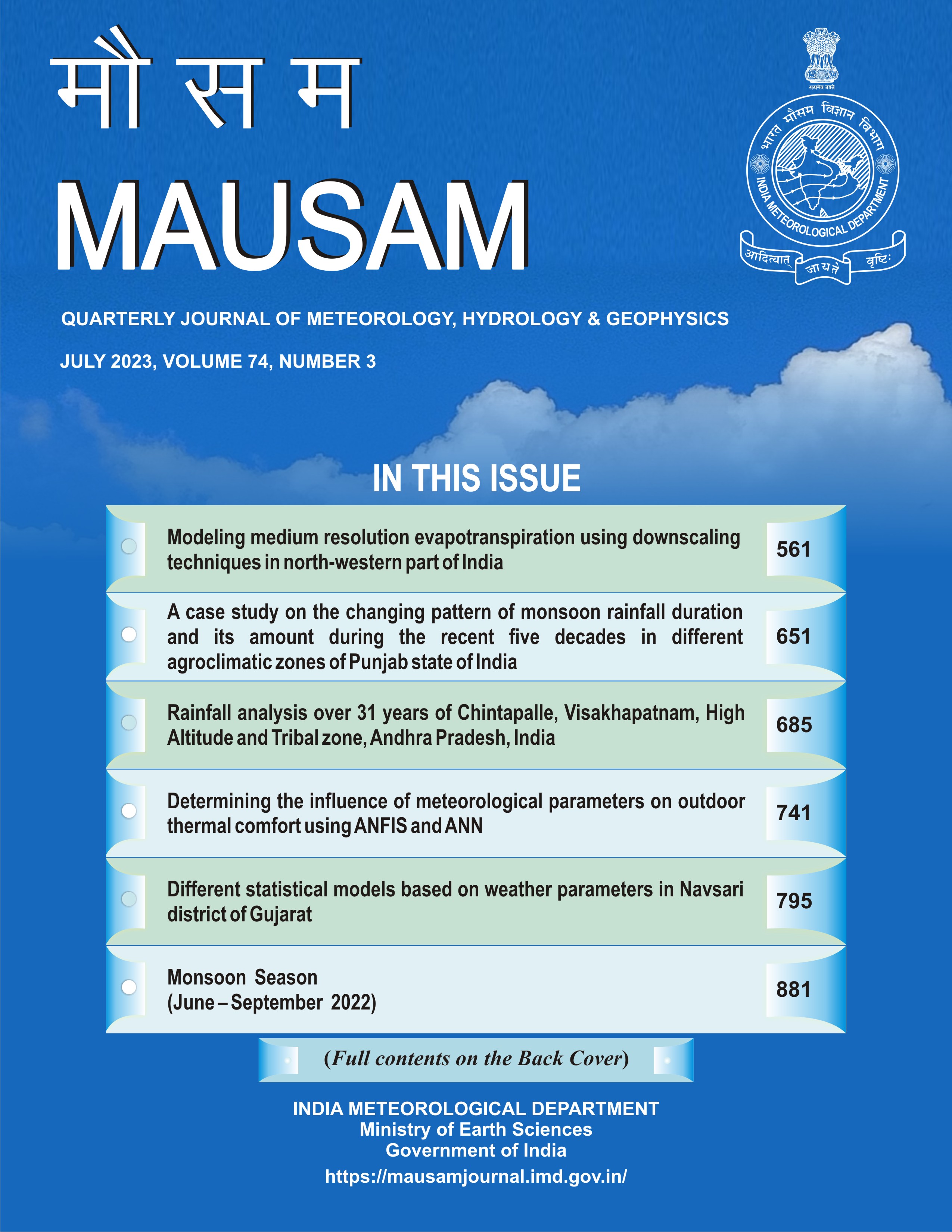Spatial and temporal variation in the seasonal air quality index of Haryana, India
DOI:
https://doi.org/10.54302/mausam.v74i3.1486Abstract
This paper presents the evaluation of the air quality in different districts of Haryana. Geo-spatial techniques were used to estimate the spatial and temporal variation (2019-2020) of gaseous and particulate pollutants. Data of six fixed pollutants were collected from Central Pollution Control Board (CPCB). In this context, data of the air pollutant (PM10, PM2.5, O3, NOx, SO2 and CO) were analyzed seasonally for 2019 and 2020. The spatio-temporal distribution of the air quality index (AQI) clearly depicted changes indifferent meteorological and crop seasons in 2019 and 2020. The result showed that the air quality was very poor in winter and the post-monsoon seasons in 2019 and slightly improved in 2020 due to COVID 19 lockdown and satisfactory air quality was observed in the monsoon and the pre-monsoon seasons for both years. It was also observed that the air quality was poor in the rabi seasons (October to March) as compared to the kharif seasons (April to September) in 2019 and 2020. The study suggested that the air quality can be improved by the best management of straw waste instead of burning, along with reducing major pollutant sources like automobiles.
Downloads
Published
How to Cite
Issue
Section
License
Copyright (c) 2023 MAUSAM

This work is licensed under a Creative Commons Attribution-NonCommercial 4.0 International License.
All articles published by MAUSAM are licensed under the Creative Commons Attribution 4.0 International License. This permits anyone.
Anyone is free:
- To Share - to copy, distribute and transmit the work
- To Remix - to adapt the work.
Under the following conditions:
- Share - copy and redistribute the material in any medium or format
- Adapt - remix, transform, and build upon the material for any purpose, even
commercially.



